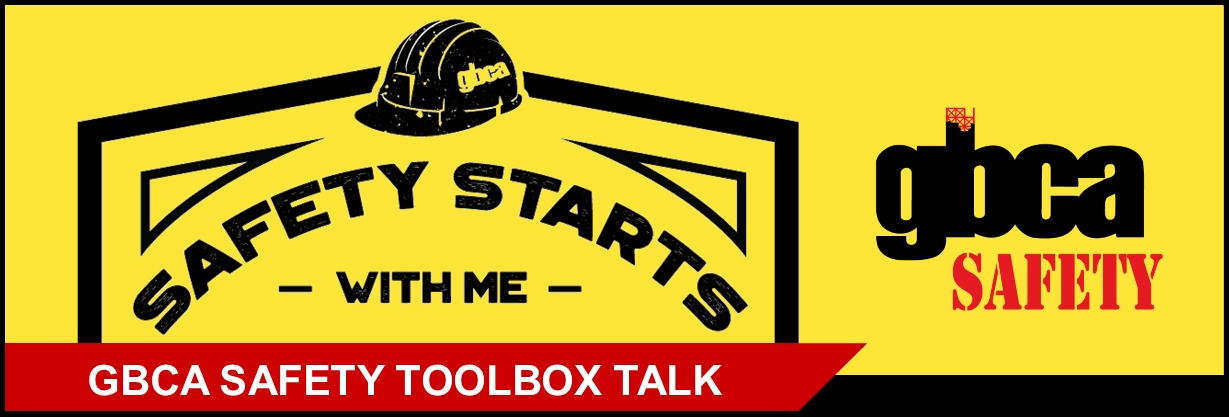This GBCA Safety Toolbox Talk discusses suspension trauma. Even with the correct fall protection PPE, injury can still occur after a fall if action is not taken quickly enough. Click below to download the Toolbox Talk as a handout (includes Sign-In Sheet).
Suspension Trauma
Wearing fall protection correctly can aid in keeping a worker alive after the fall. Although death by impact is avoided, the worker—suspended in the air—may end up suffering from suspension trauma.
Suspension trauma (Orthostatic Intolerance): The light-headedness, palpitations, tremulousness, poor concentration and occasionally fainting from being suspended in a sedentary position.
Healthcare professionals note that if a worker is left suspended in a fall protection device and their legs are immobile due to vertical hanging, the following can happen:
- Blood will not effectively pump back to the heart.
- Blood pools in the legs, causing veins to expand and reducing the amount of blood in circulation.
- The body reacts by speeding up the heart rate in an attempt to maintain blood flow to the brain.
Suspension trauma can result in fainting, organ and renal failure, and death. Death from suspension trauma can occur in less than 30 minutes. Brain damage can occur in 10 minutes.
To prevent suspension trauma:
- Plan for falls by having a rescue plan in place and workers trained on it.
- Rescue suspended workers as soon as possible. The rescue plan should be able to be implemented within 10 minutes.
- Know the signs and symptoms of suspension trauma and if it is at life-threatening levels.
Rescue procedures should include the following contingency-based actions:
- If a worker is suspended and self-rescue is not possible, or if rescue cannot be performed right away, the suspended worker should pump their legs frequently to reduce blood pooling.
- After the suspended worker is brought down, seat them in a W position.
DO NOT ALLOW RESCUED WORKERS TO LIE FLAT OR STAND UPRIGHT AFTER RESCUE. - If the rescued worker is unconscious, keep their air passages open and provide first aid.
- Workers who are rescued after being suspended should go to the hospital immediately.
- Monitor the suspended worker for signs and symptoms of suspension trauma. Similar to shock, look for the following symptoms:
- Breathlessness
- Sweating
- Nausea
- Dizziness
- Faintness
- Tingling or numbness of the arms or legs
- Low blood
- pressure
- Unconsciousness
Remember to record the attendees of your toolbox talk!
Access GBCA’s full library of toolbox talks:





